The Modern Digital Technician
.png?width=837&name=header-1-790x400%20(1).png)
The future of Anterior Esthetic Restorative Dentistry is moving into digital for sure. Smile Designers will become Digital Designers as well. Milling and printing machines will substitute analogue procedures as manual layering, waxing, setups, cut backs, shaping, etc..
But...
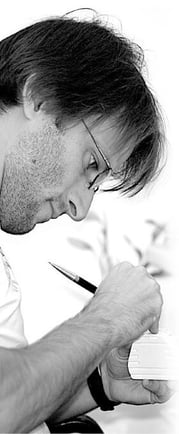
This new professional, the Digital Designer, will only be able to explore the full potentiality of this beautiful technology by understanding the principles of shaping and morphology, layering and colors, facial integration and arrangement. Analogue principles that will become the key of this learning process. So, practicing handmade procedures, will definitely be the best and only way to become a Digital Smile Designer expert.
The ability of an artist is not only in his hands but mainly in his eyes. So understanding how to visualize beauty in 3D is the key. Becoming a very good modern digital technician is not any easier than it used to be to become a traditional good analogue technician. The challenges just changed.
The 5 factors for successful modern digital restorative dentistry that technicians should specialize on:
- Facially Guided Digital Smile Design: the 3D position and arrangement of teeth and gingiva, related to the face and lip dynamics.
- Manipulating Natural Algorithm Digital files.
- Material selection for printing, milling and pressing. Since the restorations will be monolithic, the key is to select the right value so the restorations will blend in.
- 3D software know-how.
- Adjusting, finishing, fitting, polishing, staining and glazing.
At this moment I would say that 60-70% of anterior restorations cases can be beautifully solved with monolithic CAD/CAM restorations. We still have situations where conventional layering and/or pressing techniques are the best choice.
These are the situations where I believe we still have to rely on a very good, old school ceramist, performing traditional procedures (but this is rapidly changing).
- Ultra thin veneers (0.1-0.2mm)
- Matching single anteriors to adjacent natural teeth.
- Side by side anterior restorations with very different substrates.
- Partial restorations/Ceramic fragments.
I was, for 18 years of my life, this traditional ceramist and I'm definitely very proud of that. Started in 1994, working for my father.
After combining the NemoDSD workflow with the Exocad system, we started to integrate the complete digital DSD Natural restoration Workflow into the Sirona/Cerec system. The results were also as impressive with a very simple and reproducible workflow. This integration was developed in partnership with Dr. Angelo Raphael from Rio de Janeiro, Brazil. This is the way we are working at this moment and will probably only change when facial 3D documentation becomes precise, easy enough and incorporates motion to finally substitute 2D photos and videos. When that happens the facially driven, interdisciplinary smile design process will become completely 3D!
The future is exciting but the present is already amazing!
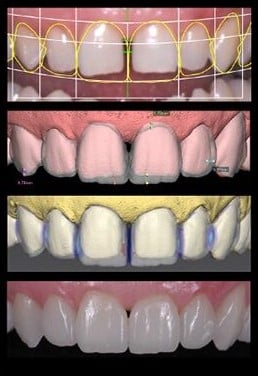
Impressive to see the beauty of shapes of these monolithic natural restorations coming out of the milling machines, with no sophisticated handmade procedures, straight to the mouth. Simple, predictable, inexpensive and reproducible.
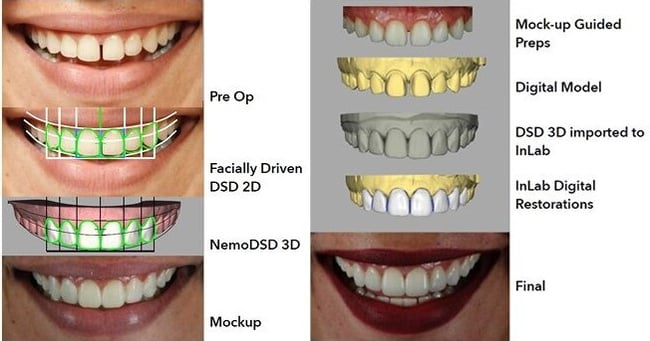
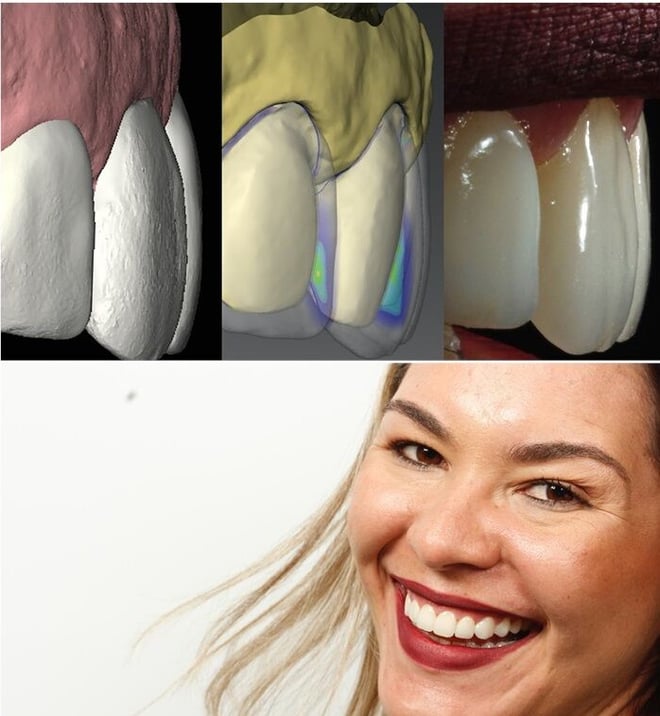
Case Performed by:
DSD 2D and Cerec Design by: Dr. Angelo Raphael
DSD 3D : DSD Planning Center
Clinical Procedures by Dr. Sergio Saraiva
Ceramic Finishing : Well Lab
DSD Natural Restoration
The ideal restoration needs to fulfill certain characteristics as adequate:
- MARGINAL FIT to the finishing lines and no excessive CEMENT SPACE.
- EMERGENCE PROFILE to generate good soft tissue support and inter-proximal contact points without a biologically harmful ledge.
- INTERPROXIMAL CONTACT AREAS with minor intraoral adjustments, without leaving black triangles on the anterior area or food trap areas on the posteriors.
- OCCLUSAL CONTACTS with minor intraoral adjustments.
- SHAPE following the principles of natural morphology, function and esthetic integration.
- STRENGTH, achieved with minimal thickness following the proper physical properties to resist long term the stresses demand by the stomatognathic system.
- COLOR, to blend with the remaining dentition and to be in harmony with the patients physical and emotional needs. For sure, the correct VALUE is the most important aspect of the color to be matched, to generate a restoration that is not too bright (high value) or too grey (low value). All these parameters are known since always. The new digital workflow brings 2 new characteristics that need to be fulfilled by successful restorations:
- COPY the approved initial project. This means that the technician understands the digital workflow and how to import, export and overlap files to respect the shapes and facial integration achieved by the initial 3D design and mock-up. Of course all these designs need to be performed utilizing libraries of natural shapes (natural algorithms). Of course, modifications can be made but in a controlled and conscious way, changing only what is desired.
- MONOLITHIC ESTHETICS, this means achieving beautiful outcome with NO.
- BUCCAL/INCISAL SHAPING, allowing natural algorithms to be respected and complex handmade procedures avoided.
Open Library of Natural Shapes
IT'S NOT ABOUT THIS OR THAT LIBRARY OF TEETH, IT'S ABOUT ANY LlBRARY OF ANY NATURAL TEETH that can fit our patient's smile better and fulfill their emotional needs. It's the era of customization and real natural restorations. We can rehabilitate the mother with the daughter's teeth, we can rehabilitate the older guy with the younger beautiful smile he used to have, we can rehabilitate our patients with the smile of anyone they might like. We can even use the beautiful 3D shapes of a celebrity.
We just need to scan the donator and upload into NemoDSD 3D, export the project into any CAD/CAM system, overlap to the preps/implants and design the restoration copying the buccal/incisal surface of the donator project.
The DSD CAD/CAM Restoration Workflow is:
- Completely Digital
- Facially Driven
- Interdisciplinarily Integrated
- Esthetic-Functionally Negotiated
- With Natural Algorithms from Open Tooth Library of Natural Shapes
- Achieved with Monolithic esthetic Materials
- COMPLETELY DIGITAL, simplifying the process by removing complicated handmade procedures.
- FACIALLY DRIVEN, reducing intraoral esthetic adjustments by designing the smile based on dynamic facial and lip dynamics analysis.
- INTERDISCIPLINARY INTEGRATION, test driving digitally the ideaI final restorative project with ortho, perio and orthognathic procedures.
- ESTHETIC-FUNCTIONAL NEGOTIATION, using digital articulators and jaw tracking devices to manage conflicts that can appear when integrating the esthetic design to the occlusal principles.
- NATURAL ALGORITHMS, using natural morphology to design restorations, no handmade or computer suggested shapes.
- OPEN LIBRARY OF NATURAL SHAPES, bringing the possibility of using any natural tooth morphology, not only the pre-suggested ones from the CAD/CAM system. SO NO COMPUTER SUGGESTED SHAPES OR HANDMADE SHAPES, but instead, perfect copies of beautiful natural dentition.
- MONOLITHIC ESTHETIC MATERIALS, utilizing monolithic, multicolored materials through milling and/or printing technology From the machine to the mouth with minimal adjustments.
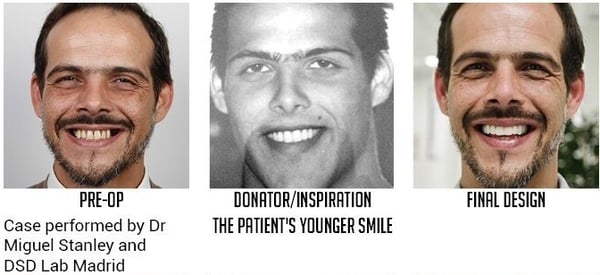
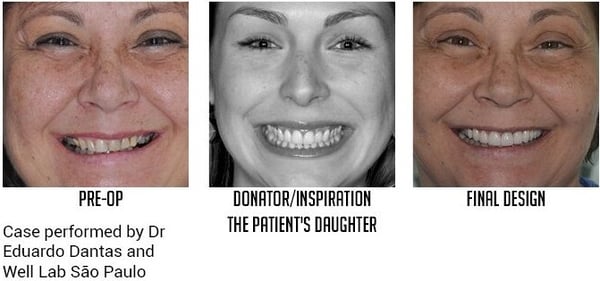
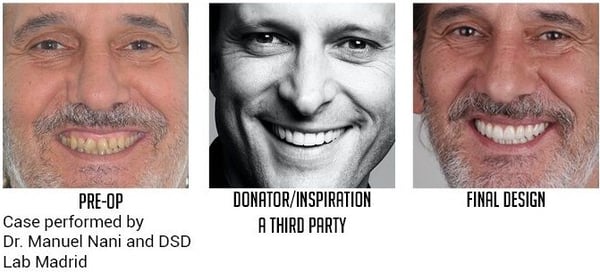

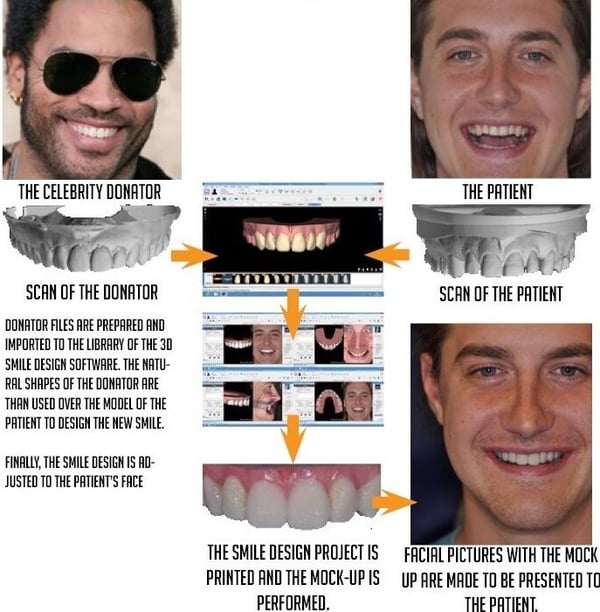
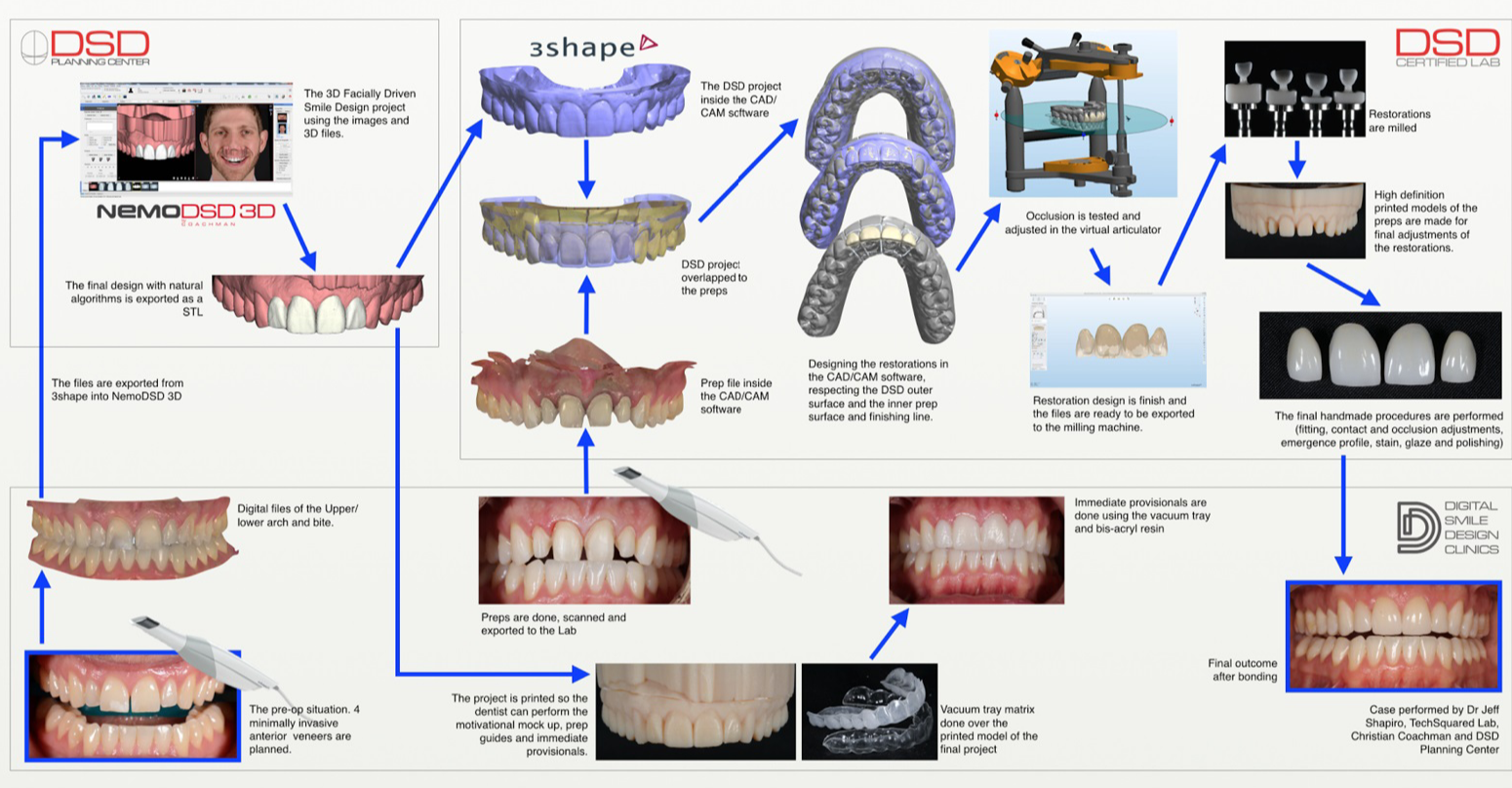

The Clinician/Technician Partnership will always evolve and should never disappear. Technology, in my understanding, will make this partnership even better and more relevant. Modern technicians will play an even bigger role in the Interdisciplinary team. To play this new role, technicians should understand not only about technologies, ceramics, function and morphology, but also understand about perio and soft tissue manipulation, treatment planning and decision making process, facial analysis and lip dynamics, bite deprogramming and registration, material selection and cementation techniques, patient management and communication protocols, minimally Invasive principles and clinical strategies to make the beautiful initial smile design project become reality at the end of the treatment.
The modern technician/ceramist will not only be required at an initial phase for a diagnostic wax-up and at the end, for the ceramic restorations. This new professional will be side by side with the dentist throughout the whole journey of making a vision become reality.
As a ceramist I was extremely honored to work with amazing clinicians, that not only shared their knowledge to help me become the technician I wanted to be, but also respected and valued my role as a Smile Designer and Team Player.
Nowadays, the complete restorative workflow has been tested in different systems showing that it is possible to perform, regardless of the brand.
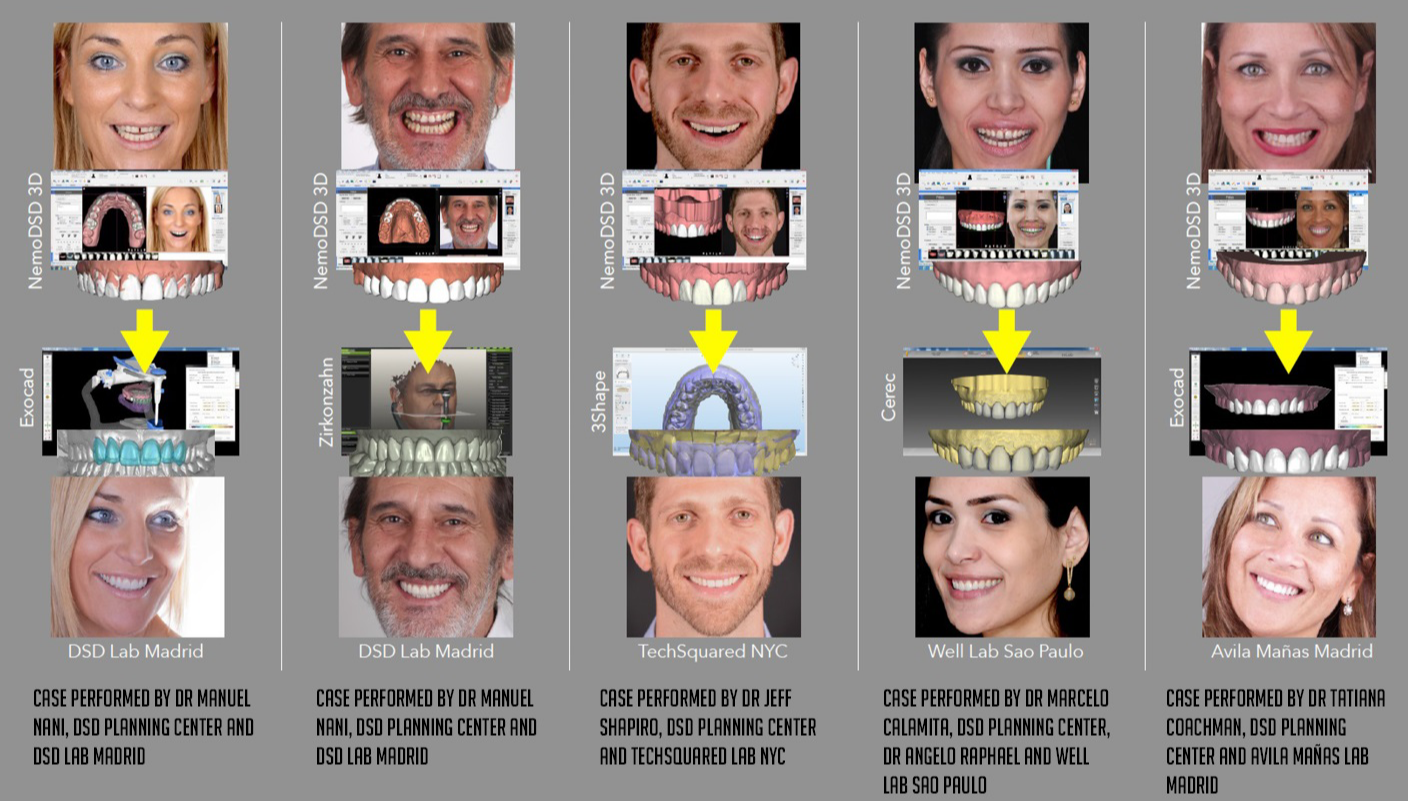
Smile Design & Implants
The 2D/3D Facially driven complete Digital workflow is also drastically impacting our surgical workflow. From simple single implant cases to full mouth All-on-X cases, as the one below. The key is to link the 3D smile design project with the CBCT and create all guides and prosthesis linked to each other and connected to initial project.
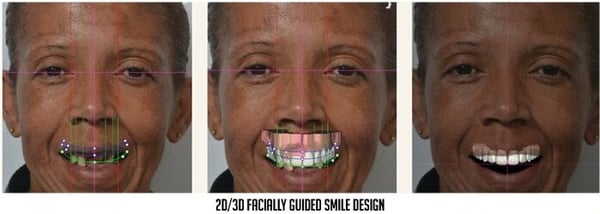

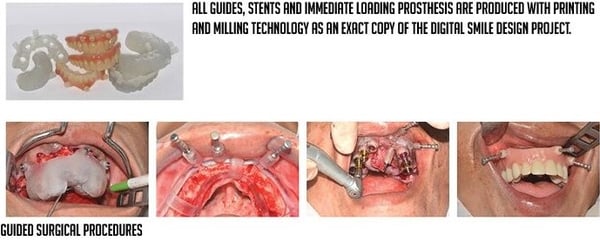
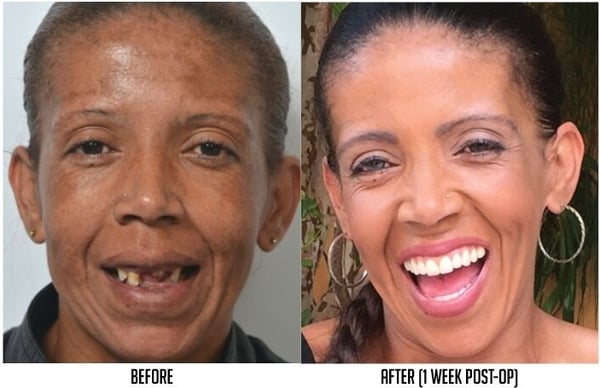
Clinical Restorative and Surgical work by Francis Coachman
Lab work by Well Lab
Planning by DSD Planning Center
Very useful and efficient complete digital workflows are now available for all types of cases. From single implant cases, with fully guided procedures that can allow us to have the final custom abutment and crown placed at the same day of surgery; to full arches with immediate loading solution, giving teeth back in the same day, in every predictable and controlled way.
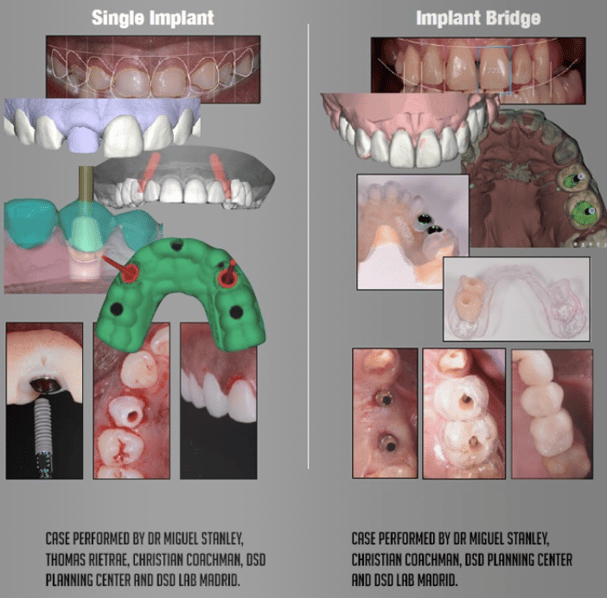
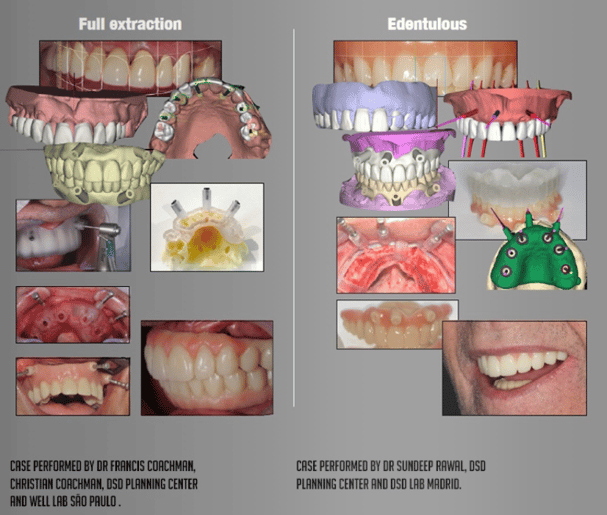
Generation 5
Complete 3D workflow with Face Scanners
The next goal is to move into 3D facial images to eliminate the need, in the near future, of 2D photos and videos. Several face scanners are now under development to make this reality useful. There are still limitations when using 3D facial images, making the simple 2D-3D protocol, starting with photos, still the reality for now and the near future. These limitations will, of course, be overcome and 3D face scanners will be the future.
At this point, the limitations of starting with 3D face scanners instead of photos and videos are:
- Costs. Acquiring a face scanner is very expensive in comparison with smart phones. The 2D-3D workflow can be performed with great results starting with smart phone images.
- Robotic images. Scanners are still not delicate enough to give the nuances of the smile and face.
- No movement. Its vital to develop a smile design project to be able to analyze the movement, of the face and lip dynamics. Since scanners are still not able to capture movement, the videos are still necessary. If a video is still necessary, it makes more sense to just capture the images needed from the video than to add an extra step, the face scan.
- It becomes and extra step since photo and mainly the video are still necessary.
- When working with 3D images, one still needs to freeze on the screen of the computer to work with and analyze the information. When freezing a 3D image on the screen it automatically becomes 2D as well, so, when drawing lines, 2D and 3D become the same.
The biggest advantage for now of face scanners is the fact that all angles of the face are present, removing the challenge of clicking the photo at the perfect angle. This is the same principle of using the video instead of the photo. By filming the patient, one can have several angles and pick the desired one to do a print screen of the video.

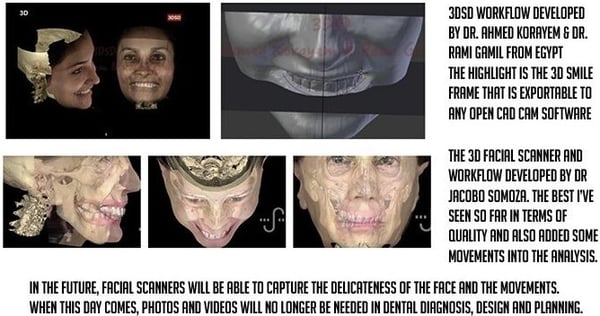
Generation 6
Integration of real Functional movements
Virtual articulators are already a reality. They can be integrated with the CBCT and the 3D face scans as seen on the Zirkonzahn Face Hunter. The virtual articulators can perform all the movements that a real analogue articulator can perform, meaning that they bring all the advantages but also the disadvantages of a real articulator. We know that when adjusting the bite in an articulator, one will try to reproduce the real movements of the jaw but these movements will never be identical to the mouth. This discrepancy will generate intraoral adjustments as we all know. If changing the incisal pin, for example, the opening movement will never be the same as in the mouth. These limitations will only be overcome when bringing the real movements of the jaw into this game. For that reason, many teams around the world have been working in sensors and jaw tracker devices.
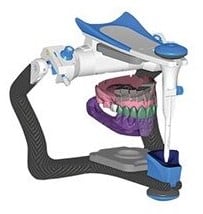
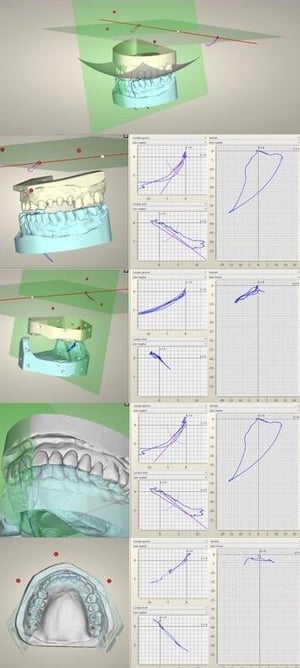
ModJaw, one of the great jaw tracking systems that also brings functional features to capture the CR, functional planes, contact points, etc... This system is now being integrated into the DSD workflow.
Analogue X Virtual Articulator
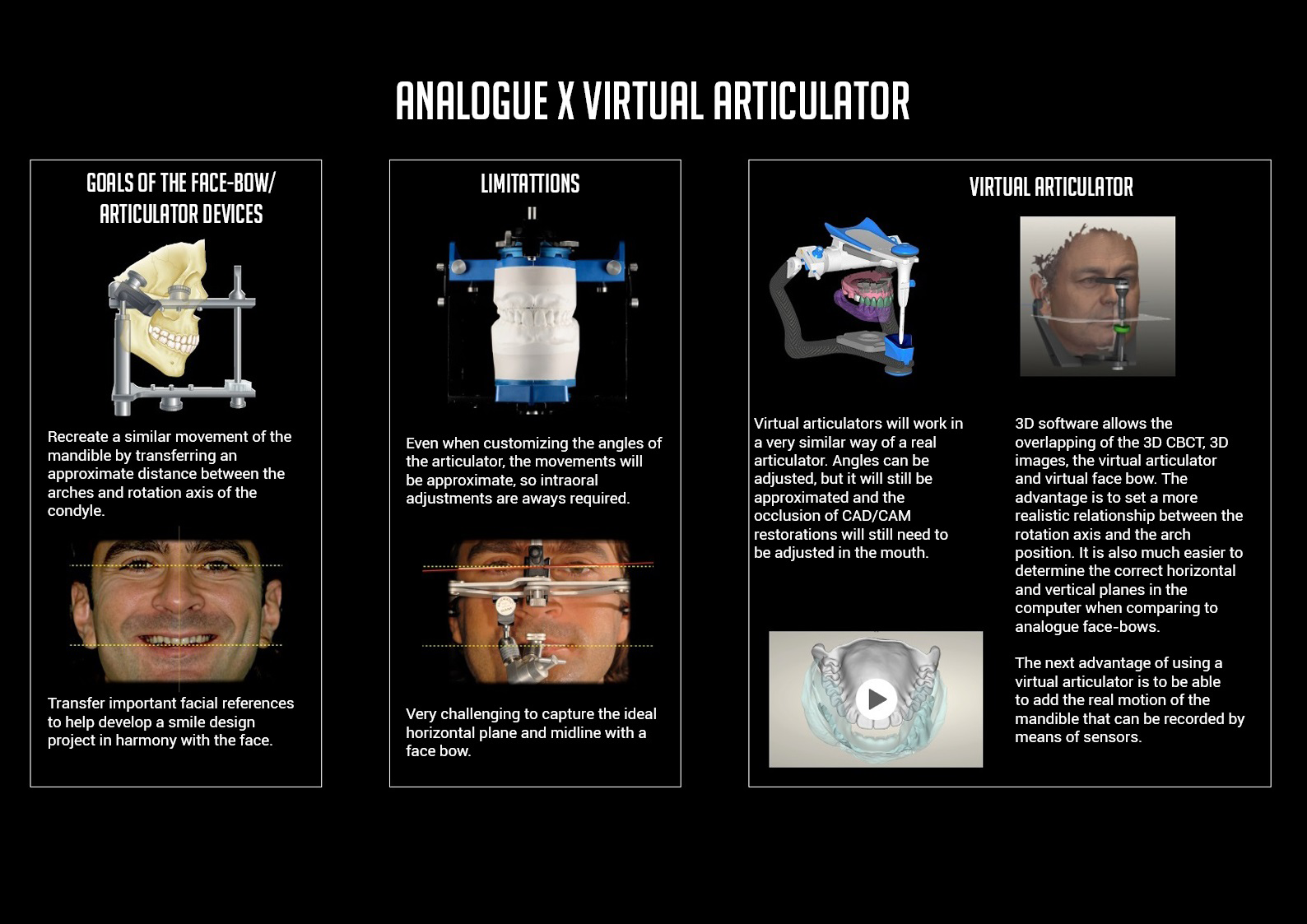
Orofacial Club 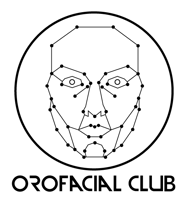
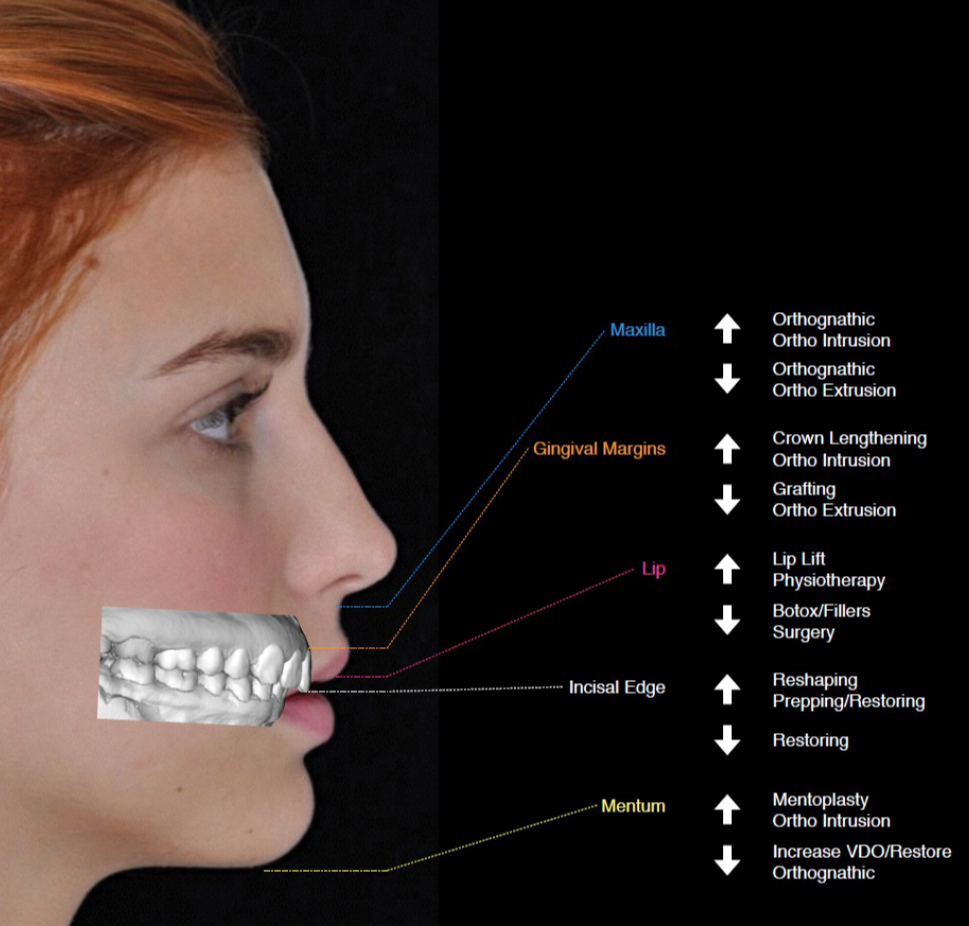
Another trend in Smile Design is the integration of procedures that go beyond dentistry (Teeth and Gum).
Understanding the relationship between the intraoral components, face and lips; and the possibilities of changing all these extra components, will become vital. Integrating Restorative dentistry with Orthognathic, Orthopedic, dermatology, plastic surgery procedures can take smile design to the next level.
In the near future we will not determine the central incisor position according to the upper lip if the lip is not on the ideal position with the face. All the components will be analyzed individually with the face and repositioned if necessary.
Do you want to learn how to become a modern dentist?



